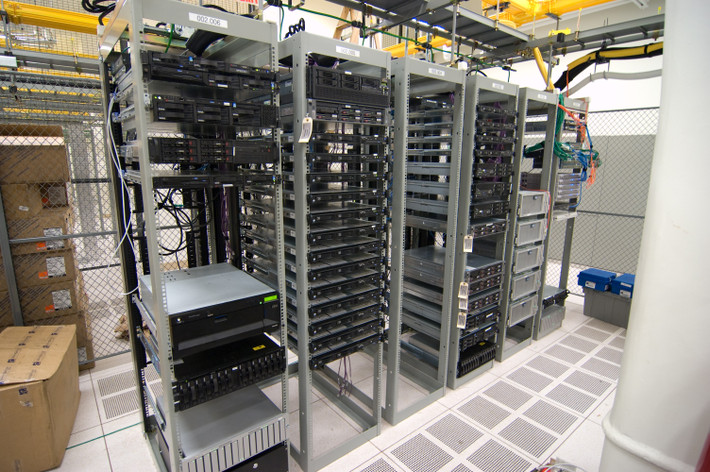Investing in a server rack is a key decision when setting up an IT infrastructure, data center, or server room. The rack will quite literally support your critical systems and act as the foundation for growth. With so many options and specifications to consider, choosing the ideal rack for your needs can be daunting.
The experts at Rackmountsales.com have been providing customers with the right rack solutions for over 10 years. Here we’ll cover their top tips for selecting the perfect server rack based on your specific environment and hardware.
Determine Your Size Requirements
One of the first aspects to decide on is the physical size of rack you need. Server racks come in a range of heights, widths, and depths to accommodate different amounts of hardware. Common heights include 42U, 45U, 48U, 52U and more. The “U” denotes rack units, which are 1.75 inches tall.
Consider the U-height of your tallest existing gear you wish to mount as well as expected future growth. Standard widths for most racks are 19 or 23 inches. Depth could be 20 to 42 inches deep depending on chassis sizes. Measure the floor space area where the rack will reside to find sizes that fit.
Choose Between Floor-Standing and Wall-Mount
Server racks come in two main configurations: floor-standing or wall-mounted. Freestanding floor racks have a larger footprint but provide greater weight support and are more adjustable. Wall-mounted racks conserve space but can only be installed on load-bearing walls and have less mobility.
Floor racks like the heavy duty [S-Series Rackmount Server Cabinet] from Rackmountsales.com allow easy access from all sides which is optimal for maintenance. Wall racks like their low-profile [WMR Series] offer a secure way to mount gear when floor space is limited.
Determine Weight Bearing Capacity
Add up the total loaded weight of all the equipment and accessories being installed in your rack to determine the weight capacity needed. Floor racks should have leveling feet capable of bearing thousands of pounds depending on hardware density. Wall-mounted racks have more limited weight ratings around 150-600 lbs.
Rackmountsales.com’s premier [C-Series Racks] offer steel construction and casters rated for 3000 lbs of shock-loaded equipment capacity making them highly robust options.
Choose Between Open or Enclosed Racks
Open frame racks like the Rackmount Sales [T-Series] simply provide the mounting rails but lack side panels or doors. This allows maximum airflow which is ideal for hot-running dense server configurations. Enclosed racks add removable locking side panels to control access and physical security.
Open racks are easier to install equipment in but leave gear exposed. Enclosed racks like the [SREF Series with Solid Steel Door] provide safety and clean aesthetics but require more clearance to remove sides during installs.
Consider Cable Management Options
With racks housing multiple devices and kilometers of cabling, integrated cable management is essential. Look for racks with features like removable vertical cable management panels, lacing bars, and rubber grommets to neatly route and secure connections.
Rackmountsales.com racks like the [WR Series] offer removable side panels with built-in cable management channels, lacing bars and large cable access ports to keep wiring orderly.
Evaluate Cooling Needs
Electronics in server racks generate tremendous heat which must be dissipated. Open racks allow front-to-back airflow but no active exhaust. Enclosed racks can overheat if cooling is insufficient. Consider supplemental fans or AC units for enclosed racks with high density hardware.
For maximum airflow, Rackmountsales.com’s [CR Series Racks] come with large perforated doors, roof fans and side ventilation panels. Their enclosed [ER Series] offers similar targeted cooling options as well.
Choose the Right Level of Access Control
Whether you need a rack open to all users or one with strict access limitations will determine the lock options required. Most racks use key locks on the front and rear doors. More advanced systems integrate electronic locks tied to access control systems and badging.
Rackmountsales.com offers racks with standard key locks or electronic locks supporting HID and RFID badges for programmed entry per personnel. Their [SREF Series] comes with both electronic and manual lock options for layered security.
Select Rack Extras and Accessories
Optional rack accessories available from Rackmountsales.com include:
- Extra fans & AC cooling units
- Air baffles for targeted airflow
- Noise reduction foam panels
- Drawers & shelves for storage
- Surge protectors & power strips
- Monitor mounts & keyboard trays
- Caster & leveler upgrades
- Cup holders, shelves & handles
- Rackmount UPS battery backups
Choose accessories that create the most productive environment. A well-appointed rack takes time to configure but pays dividends in optimized performance and management.
Conclusion
Choosing the ideal rack solutions from quality providers like Rackmountsales.com requires factoring in rack size, type, weight limits, cooling needs and access control based on your specific hardware and space requirements. Investing in a versatile, well-engineered rack with room to grow enables maintaining enterprise systems in reliable and secure fashion over the long haul.
